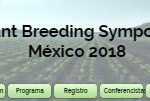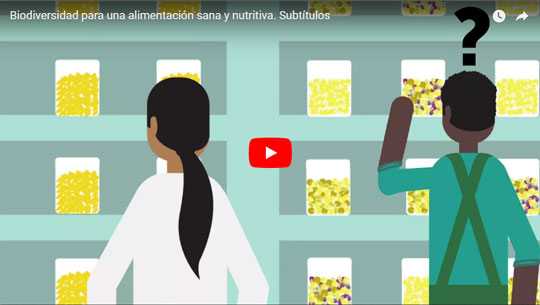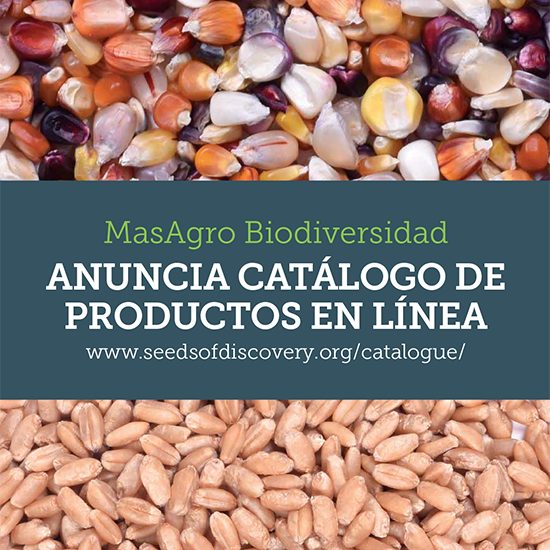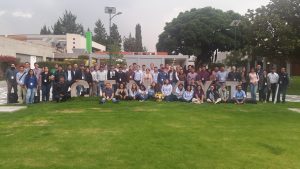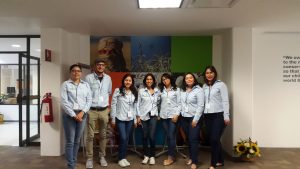Genetic diversity symposium at CIMMYT: “incredible opportunity” for students
The first DuPont Plant Sciences Symposia event ever held in Mexico took place at the International Maize and Wheat Improvement Center (CIMMYT) in Texcoco, Mexico on August 25th and 26th, 2016. The international symposium, “Genetic Diversity: The key to modern crop improvement and food security,” brought together students and experts from across the world to exchange knowledge about the uses and importance of genetic diversity for modern crop breeding.
Organized by postgraduate students working and conducting research with CIMMYT, the symposium offered a unique opportunity for young people interested in genetic diversity to attend workshops and interact with experts in their field. The event was attended by 146 students from 27 universities from Mexico and around the world, including the United States, China, Costa Rica, Guatemala and Brazil. Undergraduate students from five Mexican universities and one Costa Rican university followed the symposium via live streaming. The symposium was held in both English and Spanish with simultaneous translation.
“It’s rare that we get to attend symposiums like these, especially for free. This was an incredible opportunity,” said Francisco, a postgraduate student at the University of Chapingo in Texcoco, Mexico.
The symposium, one of nearly 20 DuPont Pioneer symposia that will be held this year across the world, was the first to be held in a research center rather than a university. As the home to one of the world’s largest collections of genetic diversity in maize and wheat, CIMMYT was chosen as an ideal location for students to learn about the latest advances and technologies in this field. The Center is also home to cutting edge projects such as the Seeds of Discovery initiative, which works to unlock and utilize novel genetic diversity from genebanks to accelerate the development of improved maize and wheat varieties.
“Things have advanced so much since I first started studying genetics—for young scientists it’s such an incredible time to be in this field,” said Kevin Pixley, director of the Seeds of Discovery (SeeD) initiative and the Genetic Resources Program at CIMMYT, and keynote speaker at the event. “Don’t be scared about figuring it all out. Not every method will work, but you will learn so much. This is a time like no other for science and genetic diversity, with cutting edge technological frontiers such as gene editing. We’re just scratching the surface, science is moving so fast, but that means that it’s out there for you to make a big discovery, there is huge potential.”
The speakers, international experts in the fields of genetic diversity and crop science, presented on topics such as to how to utilize genetic diversity in modern crop breeding to confront the challenges faced by agriculture today, such as climate change and other threats to food security. The event included both keynote speeches and breakout sessions that allowed students to interact directly with scientists and experts. “All of the speakers were very knowledgeable and inspiring. This symposium reinforced my desire to conduct my thesis on a topic related to genetic diversity,” said Mariela, a student at the University of Chapingo.
The speakers included Kevin Pixley, Director of the Genetic Resources Program at CIMMYT and the SeeD initiative; Jim Holland, Professor of Crop Science and Research Geneticist at North Carolina State University (NCSU); Renee Lafitte, research fellow at DuPont Pioneer; Leandro Perugini, research scientist at DuPont Pioneer; Major M. Goodman, member of the national academy of sciences and director of the maize breeding and genetics program at NCSU; and Juan Manuel Hernández Casillas, researcher in genetic resources at the Instituto Nacional de Investigaciones Forestales, Agrícolas y Pecuarias (INIFAP).
“This symposium was an excellent opportunity to show students what can be done with genetic diversity—they are the next generation, and they will be the ones responsible for conserving it and utilizing it in the best way possible,” said Hernandez Casillas. “That is why it is so important to implement strategies for the study and investigation of genetic diversity in the present day.”
The student organizers of the event, several of which are conducting research for their theses with scientists from the SeeD initiative, gained important skills in event organization through their participation in the conference. “It was a challenging yet rewarding experience to participate in this symposium on “the other side” for the first time, as organizers. We discovered the incredible amount of tasks to be completed and the difficulty of directing and administrating an event of this kind,” the organizers expressed in a written statement. “However, the experience taught us that despite the difficulty, when you work together as a team with a shared vision, you have the power to take charge of the situation and ensure that everything comes out well.”
Members of the student organizing committee included Juan de Dios Hernández Quintero, Cynthia Ortiz Robles, Víctor Vázquez Pozos, Yadhira del Carmen Ortiz Covarrubias, Noemí Ortega Jiménez, Benjamin Cervantes Romero, David González Dieguez, Maricarmen Sandoval Sánchez, Maria del Pilar Suaste Franco, Viridiana Trejo Pastor and Lourdes Ledesma Ramírez. The students organized the event with the support of Gilberto Salinas, head of capacity development at the Seeds of Discovery (SeeD) initiative, and Tabare Abadie, lead of Research Effectiveness at DuPont Pioneer.
For more information on the symposium, please click here.
Videos of the keynote speeches can be viewed on the CIMMYT youtube channel here.
Tags: capacity development, DuPont Plant Sciences Symposium, genetic diversity, Mexico

